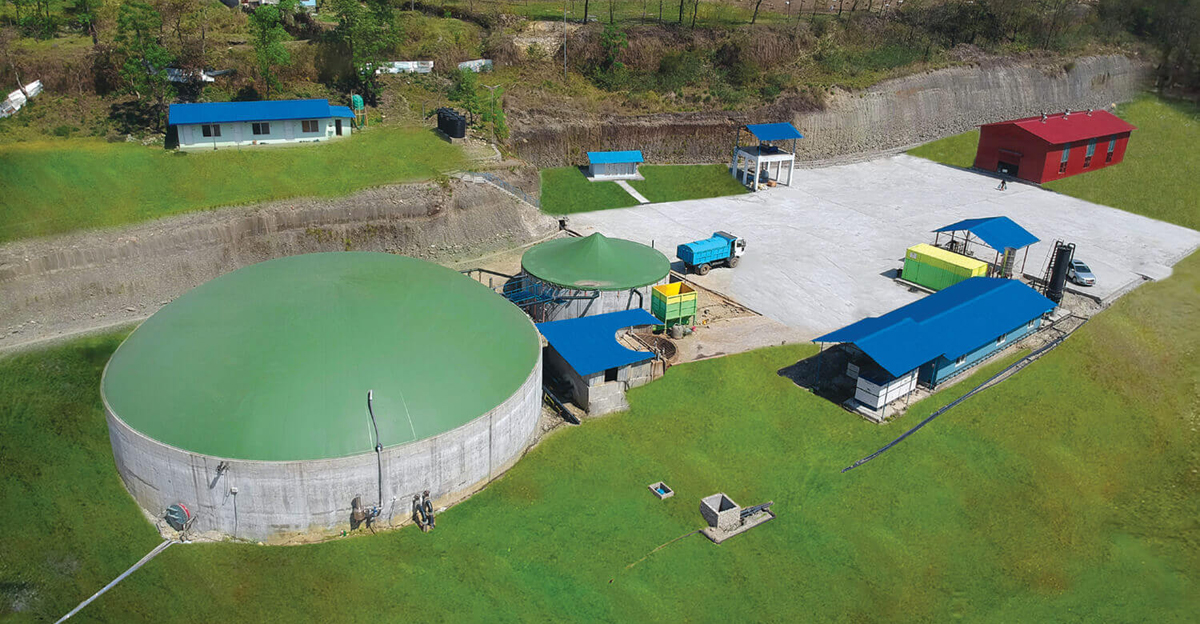
Kathmandu; Promoting sustainable biogas production in Nepal could help replace LPG gas and solid biomass, thereby reducing greenhouse emissions and lowering household air pollution. Nepal’s biogas policies could realize these multiple benefits by accounting for spatial variation in biogas production potential across the country, according to a study published in Sustainable Development.
"Our research has uncovered a hidden gem in Nepal: an astonishing 4.4 billion cubic meters of biogas production potential from waste biomass," declared Sunil Prasad Lohani, the lead author of the study and Associate Professor at Kathmandu University. The study highlights the Terai region as a promising location with significant potential for biogas development, particularly in Jhapa, Morang, Sunsari, Sarlahi, and Saptari districts. "Utilizing livestock manure, agricultural residues, and municipal solid waste for biogas production, Nepal can replace 153 million LPG cylinders with this remarkable volume of biogas annually," Lohani elaborates.

Replacing LPG cylinders with biogas could reduce the import of fossil fuel amounting to NRs. 60 billion, while applying digestate as fertilizer could substitute chemical fertilizer and earn NRs. 200 billion. Utilizing biogas instead of LPG and solid biomass for cooking could avoid carbon dioxide and PM2.5 emissions of 6.3 million tons, 0.4 million tons, and 0.04 million tons per year, respectively. Such a shift translates to reduced import reliance, a strengthened national economy, a greener energy sector, and improved indoor air quality.
"In Nepal's sustainable energy transition, embracing alternative sources goes beyond a mere fuel shift; it becomes a strategic force for achieving multiple Sustainable Development Goals (SDGs)," explained Prajal Pradhan, a co-author of the study and Assistant Professor at the University of Groningen, the Netherlands. “Promoting sustainable biogas production could propel Nepal towards a cleaner, healthier, and more sustainable future, where biogas, with its potential use for cooking, transportation, or electricity generation, contributes to the multifaceted benefits aligned with various SDGs."

However, Lohani issues a cautionary note, emphasizing the abundant potential of biogas while expressing concerns about the current policy landscape, implementation mechanism, and monitoring and evaluation modality. A critical review and improvement of policies governing the promotion of biogas, along with enhancing stakeholder capacity building, are imperative.
“Harnessing biogas in Nepal holds immense potential, but ensuring a constant supply of waste biomass is crucial for its success,” Lohani explained. Investing in infrastructure, waste management systems, regional collection hubs, and biomass aggregation centers will be critical. Additionally, policymakers should leverage spatial analysis and GIS-based mapping tools to identify optimal locations. “By proactively addressing these considerations, Nepal can unlock the true potential of biogas and embark on a sustainable path towards achieving multiple SDGs,” Pradhan highlights.